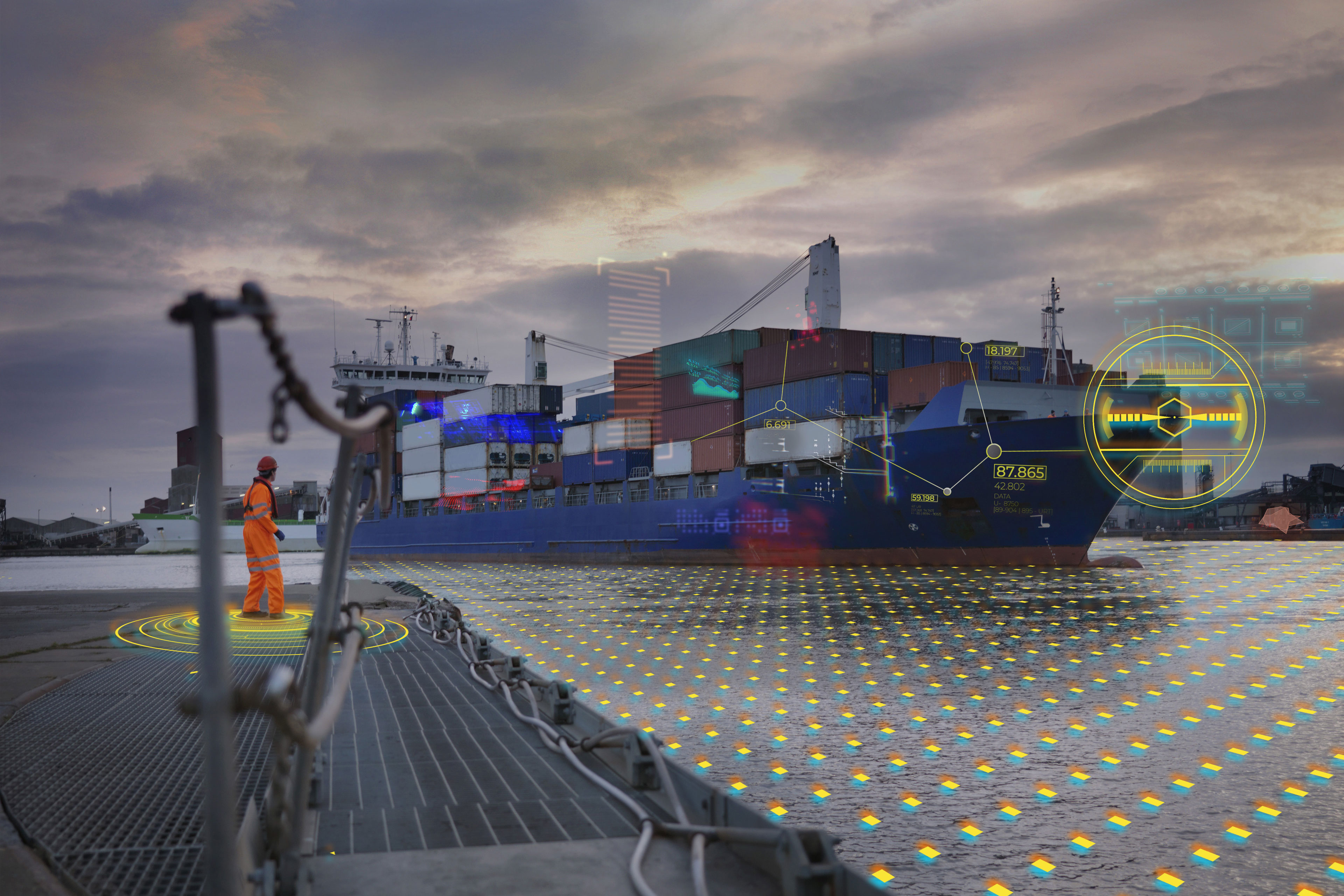EY refers to the global organization, and may refer to one or more, of the member firms of Ernst & Young Global Limited, each of which is a separate legal entity. Ernst & Young Global Limited, a UK company limited by guarantee, does not provide services to clients.

Intelligent automation is a key driver of transformation. Irish organisations therefore need to add AI as a tool for their automation journey.
In brief:
- Perceived complexities in the implementation of AI solutions and the need to address issues of both operations and ethics are some of the key challenges.
- There is need for a change in mindset for Irish organisations to pivot towards hyperautomation.
- The fail-fast-forward approach can help learn from early mistakes and ease the cost burden by keeping the scope of the project small.
Irish businesses are on the road to realising their digital transformation ambitions, although not all are moving at the same pace. And as they pivot to conquer the next frontier of automation – hyperautomation – as part of that journey, it is time to assess their maturity levels and look at how they can accelerate adoption of artificial intelligence to deliver faster business decisions.
Only 10% of the respondents to the EY Ireland Tech Horizon 2022 survey identified process automation as one of the top areas of technology investment. Tim B. Morthorst reflects on that to explain why that is so and what are the likely challenges Irish organisations face in driving hyperautomation. Tim makes some compelling recommendations for Irish businesses to blend in hyperautomation into their larger digital strategy.
Q. Have Irish organisations been quick in adoption of process automation and have they realised its full potential?
In the EY Ireland Tech Horizon survey only 10% of the respondents identified process automation as a top area of tech investment in the next two years. Why is that so?
Tim Morthorst (TM): It depends on what type of automation you look at. We have to distinguish between traditional IT automation and Robotics Process Automation (RPA). There has been an acceleration in RPA in the last five to six years in Ireland. The emergence of RPA has enabled automation that does not require specialised IT skill sets and those can be deployed must faster today. If assessed on a global scale, Ireland has been well ahead of many other countries in RPA.
There are now new generations of automation coming in from the commoditisation of artificial Intelligence (AI), which is probably confusing for many and that is why we see only 10% of respondents focusing on automation. That is likely because there are two extremes of the automation spectrum. On the one hand, there is RPA, which applies robots to do mundane tasks and on the other side we have the emergence of AI which enables us to do a lot of things within more complex business processes requiring human cognition rather than just mundane tasks.
For instance, if you were to apply for a mortgage, the decision on whether or not to grant the mortgage is a cognitive decision rather than a calculation. This requires “expert systems.” These systems mimic the idea of being an expert in, for example, mortgage approvals and help your automations arrive at a decision.
Most AI solutions are slowly being commoditised and moving along from one side of the spectrum which contains complex AI-driven automation, further towards RPA, causing the intersection of these technologies being termed as intelligent automation.
Many AI solutions are moving on that scale to be increasingly simple to work with because many software companies are packaging the complex AI as simple and accessible solutions. And it's essentially becoming part of all of these previously simple platforms. What that means is that suddenly we can do not just robotics process automation, but also intelligent automation or hyperautomation within the same software.
So, when organisations start strengthening business processes with AI, they don't necessarily distinguish between automation and augmentation. And that explains why only 10% of the respondents in the Tech Horizon survey said process automation was a top area of tech investment in the next two years as while they are achieving hyperautomation, they are rather labelling it as AI or machine learning (ML) projects.
Q. Can you share some perspective on what the maturity level of automation is across industries in Ireland?
TM: In Ireland there has been a shift towards “Gen 2” of automation, which is the idea of using AI components in previously very rule-based robots. In Ireland, as it is globally, the financial services industry has become very mature on this journey.
Ireland’s public sector is probably one of the most advanced in Europe in the adoption of automation.
Overall, the level of maturity has been reasonable across all industries in Ireland compared to the rest of Europe. However, that has been in the area of simple RPA. We are not necessarily that far ahead into the intelligent automation space.
Q. Where are Irish organisations in their hyperautomation journey? How fast are they pivoting towards hyperautomation?
TM: Ireland is powering ahead and overtaking a lot of Europe in RPA. However, RPA is a solution to a very small problem. The need of the hour is to add AI-enabled intelligence to those automations. Europe has been one of the first movers on RPA, but often the first movers end up being the least advanced because we go in and invest in the initial technology. And the late adopters learn from the mistakes of the first movers and adopt the newest technologies. So, in that respect there has been a first mover disadvantage for Ireland.
Hyperautomation is a toolbox of many different technologies. To manage the abilities and the limitations that these technologies have, we need to identify the business problems first and then see what technologies can be applied to them instead of using the technology to merely mimic the human. Automating processes as designed for humans doesn't work for hyperautomation in most cases. There is, therefore, need for a change in mindset to pivot towards hyperautomation.
We need to move away from solutions that reap tactical benefits in only some pockets of the organisation and instead look at transformational benefits. And that is where the focus of the second generation of automation lies – on more strategic decision making.
Q. Can you walk us through some of the key challenges Irish organisations face to blend in hyperautomation into their larger digital strategy?
TM: One of the key challenges is that people are not aware that the technology is available right now, right here. Most people think it is still too immature, raising concerns around errors and imprecision. They see it as still being experimental rather than an enterprise-ready technology that can deliver a lot of value using the right implementation and governance framework.
The other challenge is often resistance from either IT teams or business users. Much of the hesitation in IT organisations often comes from a lack of understanding of the implication that hyperautomation would have on the overall IT infrastructure that they have worked with for years to make it work reliably. For business users on the other hand, the resistance is most often due to a fear of the impact that it will have on their day-to-day work regardless of whether the suggested results are automation or augmentation.
The fear of complexity is also a challenge. While building AI solutions people need to address issues of both operations and ethics, and the information around it can be overwhelming at times. While people could build smart AI solutions, they may find it hard to ensure that it is ethical and that it fits in operationally. It is because of these perceived complexities that they may be inclined to proceed with more traditional automation initiatives.
Q. What steps should Irish organisations take to accelerate hyperautomation?
TM: There are three main steps that organisations can take.
Summary
Fear of complexity is a challenge in acceleration of hyperautomation. To ease concerns of complexities, IT teams and business need to work as a cohesive unit to ramp up digital transformation initiatives and to put their digital-first foot forward.
Read articles
How organisations can adopt an AI model that benefits all
There needs to be a balance between enhancing business’ societal license to operate and the financial Return on Investment from AI. Find out how it can be done.
How Irish organisations can realise the benefits of AI at scale
Machine Learning Operations (MLOps) can help organisations reach their true AI potential. Find out how.





